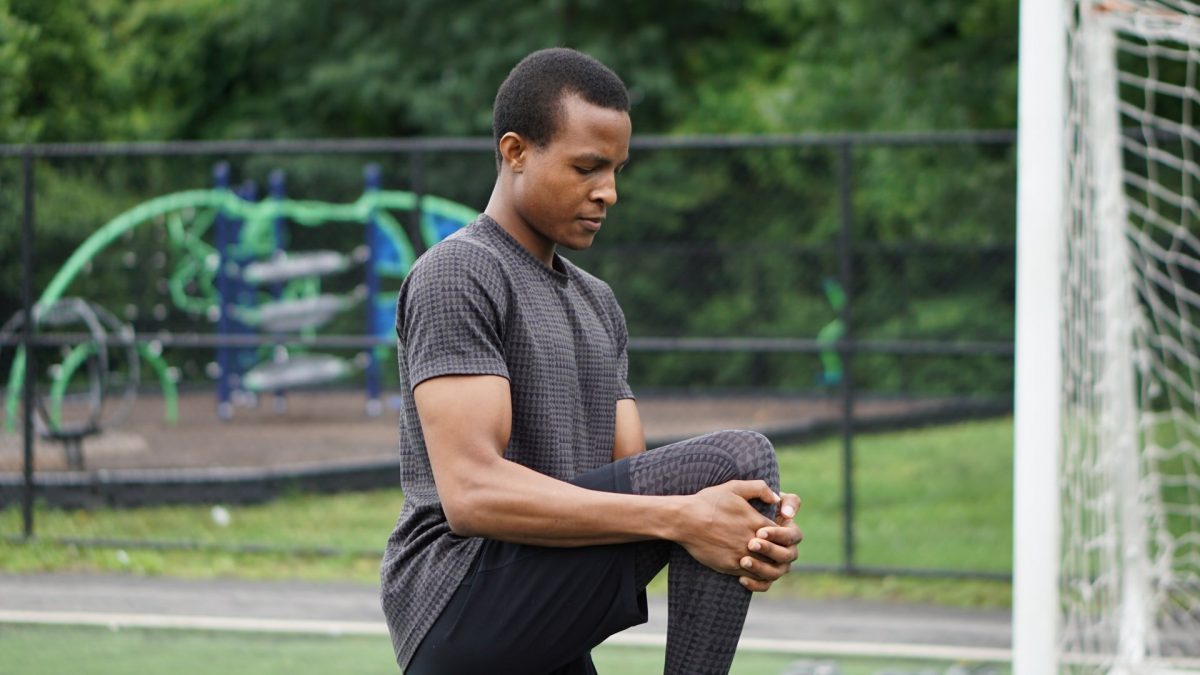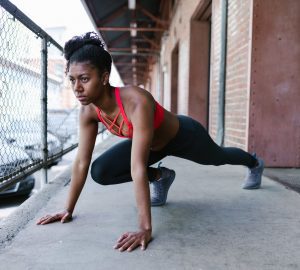Between massage guns and foam rollers, pre-workout supplements and post-workout supplements, warm-ups and cool-downs, saunas and ice baths, and anything else the health and fitness industry has to offer, finding effective strategies that work best for your body can be a bit overwhelming to prevent injuries during workouts.
But no matter what our sports, skill levels, and health backgrounds are, there are some go-to strategies all of us can use that will help us get the most out of our workouts and reduce our risk of a sidelining sprain, strain, or other soft tissue injury.
Here are three elements we encourage active folks to focus on before, during, and after exercise in order to avoid injuries and continue making progress.
1. Before: Focus on Dynamic Movements, Not Stretching
Static stretching (e.g., holding a stretch for 60 to 90 seconds) before a workout is not shown by research to be effective to prevent injuries during workouts—and depending on the type of exercise you perform, static stretching could be more or less useful no matter when you do it.
For example, a review published in Sports Medicine concluded that static stretching is likely beneficial for people who do activities that require a lot of bouncing, jumping, and other ballistic-type movements, but less advantageous for people who do lower-impact activities like cycling and swimming.
Debates over static stretching aside, all of us can benefit from about five to ten minutes of dynamic movements before working out. Active warm-ups prepare the body for the demands of exercise by:
- Increasing blood flow, tissue oxygenation, core body temperature, and heart rate
- Reducing stiffness and improving elasticity in joints, muscles, and tendons
- Priming the nervous system for enhanced coordination and motor control
- Improving mental focus and helping athletes “get in the zone”
Our suggestion? Get the whole body moving with some easy cycling, jogging, jumping jacks, or brisk walking, AND add in movements that target areas of the body you’ll use during your workout—especially the ankles, knees, hips, spine, and shoulders. We like:
- Arm circles and leg swings
- High low planks
- Bird dogs
- Slow mountain climbers
- Lunge to high knees
2. During: Think (But Don’t Overthink) Form
To reduce the risk of injury mid-workout, it’s important to understand what good form means for your given activity, whether that’s running, strength training, or something else. Take the time to learn basic techniques before adding a lot of intensity or volume, especially with things like lifting weights.
Then, during your workout, be aware of when your technique starts to slip, which is bound to happen as you get fatigued. You don’t need to be fearful if you’re not moving “perfectly”—your body is more resilient than you may think! Just don’t get lazy, either. Focus on one form element to correct at a time, and always stop the workout if you notice any red flags like sharp pain, chest pain or pressure, lightheadedness, or severe difficulty breathing.
It’s also important to understand that your body might have factors preventing you from achieving ideal form. For example, super short and tight hamstrings can make it difficult to maintain a neutral spine in the starting position for a deadlift because of the way these muscles pull on your pelvis.
If you’re just not getting it, try working with a personal trainer or see a physical therapist who can help you modify movements and address underlying issues—like muscle-tendon length imbalances, scar tissue, joint mobility restrictions, or core muscle weakness or incoordination—so you can come back to your workouts with greater efficiency, consistency, and intensity.
3: After: Prioritize Sleep
What you do outside of the gym has just as much influence on your health and performance as what you do in the gym. And a growing pile of research shows that being chronically sleep deprived can dramatically increase your risk of musculoskeletal injury—not to mention reduce your athletic performance.
A recent review in Current Sports Medicine Reports, for example, found that getting fewer than seven hours of sleep per night for two weeks nearly doubled (1.7 times) the risk of injury!
So, commit to getting the recommended seven to nine hours of Zzz’s per night, use science-based strategies to fall and stay asleep more successfully—dimming the lights after 10 p.m. is a good start—and talk to a doctor if you struggle with chronic insomnia.
Conclusion
Can foam rollers, massage guns, saunas, and supplements help you prevent injuries during workout and be the best athlete you can be? Maybe—and if you enjoy them, then by all means keep them in your routine!
Just know that from an injury-prevention standpoint, they’re not a replacement for the basics we’ve outlined here: active warm-ups, attention to form, and good sleep.








